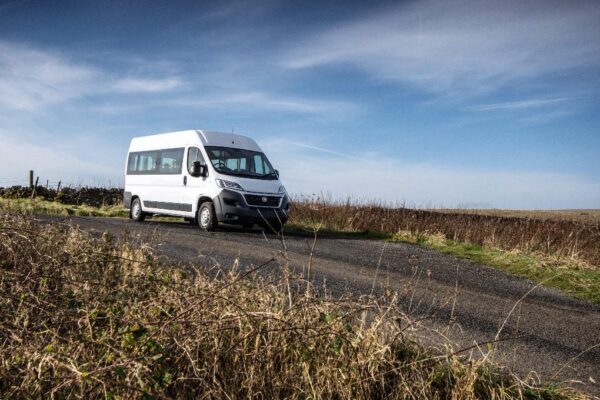On a minibus, access is provided via both the side and rear entrances. For each, there are options to consider:
- At the side entrance, different doors, steps and handrail arrangements may be specified.
- At the rear entrance, wheelchair access options are available in the form of ramps and tail lifts with many options to choose from.
The side entrance
Starting with walk-on access to the near side, the first thing to consider is the door itself. Depending on the passenger requirements and base vehicle type, you could consider:
- a hinged door at the near side cab
- a sliding side door into the saloon
- a powered door in either position – although powered solutions can be limited in application
Each type of door will offer slightly different apertures and step dimensions. Once the type of door is identified we can look at adding suitable steps and handrails. Step-wise, you could consider:
- a manual cassette step
- an electric cassette step
- a manual fold out step.
Depending on the level of mobility of your passengers additional steps may also be provided as part of the internal body work.
To complement the step choices there are a number of handrail arrangements to consider:
- As a minimum, there will be a small grab handle to assist
- In addition to this, you can have ergonomically designed fixed hand rails and fold out rails.
The need for these is determined by the mobility of your passengers.
The rear entrance
If wheelchair access is required there are three variations to consider. These are:
- a ramp (possibly winch assisted)
- an internal tail lift
- an underfloor tail lift.
The most suitable method of access is determined by frequency of need, number of passengers and operators using the equipment and the attributes of the base vehicle.









